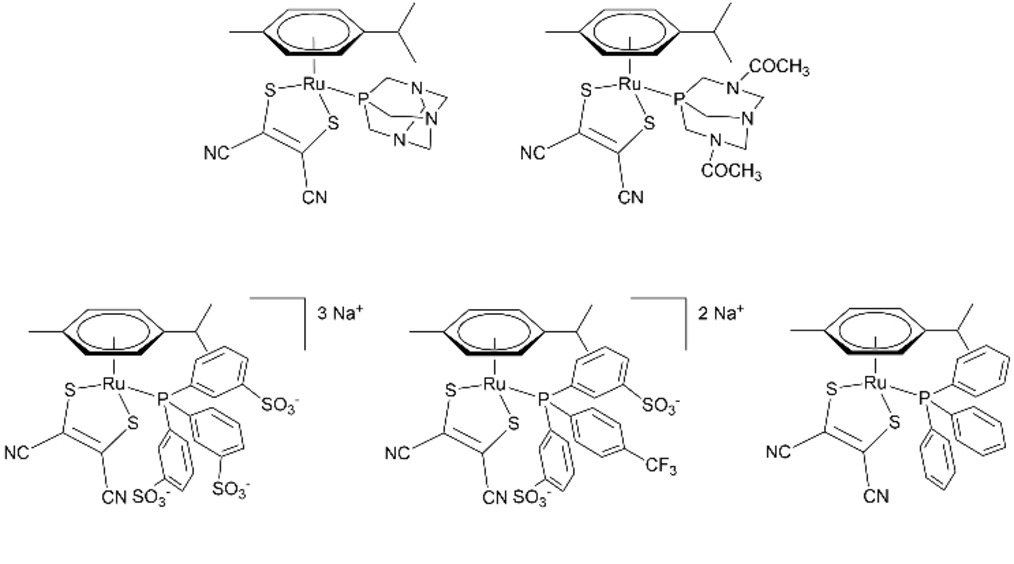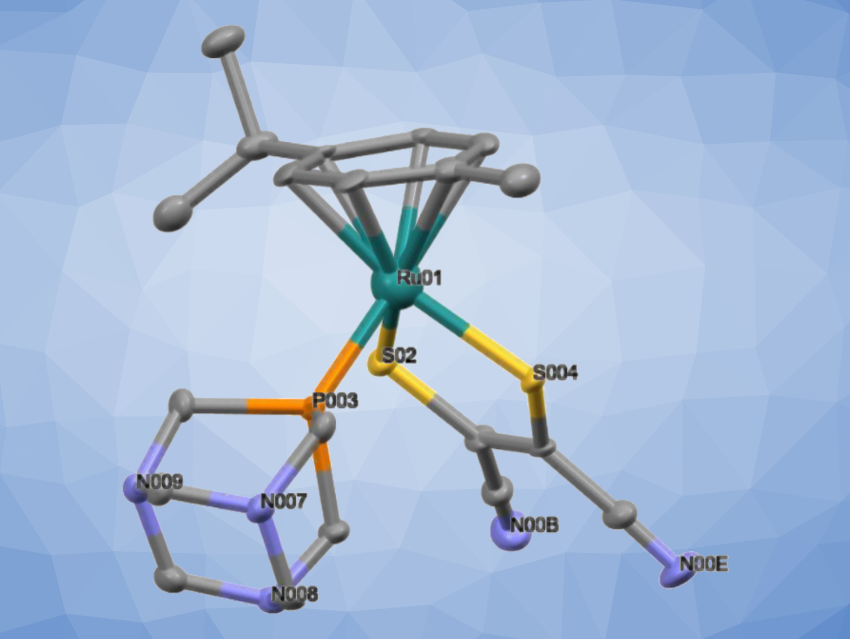The discovery of the anticancer properties of cisplatin led to clinical successes in cancer treatment. However, cisplatin suffers from limitations such as general toxicity. This is caused by its mode of action, which does not discriminate between cancer and healthy cells. Finding selective drugs against cancer is an important research target. Electron-deficient organometallic compounds are interesting candidates in this context. These molecules are often highly potent and selective against in vitro cancer models, but their lack of water solubility hinders their distribution in a living organism.
Anaïs Pitto-Barry, Université Paris-Saclay, CNRS, Institut Galien Paris-Saclay, Châtenay-Malabry, France, and University of Bradford, UK, and colleagues have modified the electron-deficient ruthenium complex [(η6–p-cymene)Ru(Mnt)] (Mnt = maleonitriledithiolate) with phosphine ligands to obtain water-soluble and highly potent molecules with anticancer activities. The team prepared five maleonitriledithiolate-based ruthenium complexes (pictured below) using different phosphine ligands, i.e., four water-soluble phosphines and triphenylphosphine as a hydrophobic control. The complexes were synthesized from [(η6–p-cymene)Ru(Mnt)] and the corresponding phosphine ligands.

The team evaluated the in vitro cytotoxicity of the complexes towards two ovarian cell lines, one non-small-cell lung cancer cell line, and one normal prostate cell line. The complex with triphenylphosphine-3,3′,3”-trisulfonic acid trisodium salt (TPPTS) and the triphenylphosphine complex showed similar cytotoxicity compared with the electron-deficient precursor complex. These two complexes showed selectivity against ovarian cancer cells over normal cells. An evaluation in mice confirmed little in vivo toxicity and good anticancer potential.
- Anticancer water‐soluble organoruthenium complexes: synthesis and preclinical evaluation,
Anaïs Pitto-Barry, Maria Azmanova, Laia Rafols, Patricia A. Cooper, Colin C. Seaton, Steven D. Shnyder,
ChemBioChem 2022.
https://doi.org/10.1002/cbic.202200259




